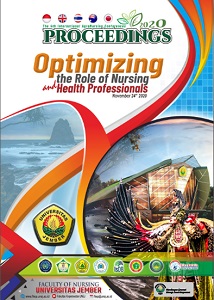THE EFFECTIVENESS OF THE SURGICAL SAFETY CHECKLIST (SSC) FOR IMPROVING PATIENT SAFETY IN HOSPITALS”: A SCOPING REVIEW
Abstract
Background: Patient safety is a key indicator of healthcare quality, particularly in surgical procedures that carry a high risk of complications and medical errors. The Surgical Safety Checklist (SSC), developed by the World Health Organization (WHO) in 2008, aims to enhance patient safety through three main phases: sign-in, time-out, and sign-out. Although SSC has been proven to reduce complications and mortality rates, its implementation continues to face various challenges, especially in developing countries. This study aims to map the scientific evidence regarding the effectiveness of SSC implementation in improving patient safety in hospitals through a scoping review approach. Methods: This study followed the methodological guidelines of the Joanna Briggs Institute (JBI) and the PRISMA-ScR framework. A systematic literature search was conducted across five major databases: Scopus, PubMed, ScienceDirect, the Cochrane Library, and Google Scholar, covering publications from 2014 to 2024. Inclusion criteria were based on the PCC (Population, Concept, Context) framework, encompassing empirical studies that examined the implementation of SSC and its impact on patient safety. Results: Based on the initial search, a total of 612 articles were identified across several databases, namely Scopus (135 articles), PubMed (128 articles), ScienceDirect (96 articles), Cochrane Library (78 articles), and Google Scholar (175 articles). The Surgical Safety Checklist (SSC) consistently demonstrated contributions to reducing the incidence of surgical complications (14 articles), lowering postoperative mortality rates (9 articles), improving adherence to standard operating procedures (11 articles), and enhancing communication within surgical teams (8 articles). Furthermore, 17 out of 21 analyzed articles were categorized as having high methodological quality. Nevertheless, several challenges were identified in the implementation of SSC, including cultural resistance, limited resources, and administrative execution lacking functional significance. Conclusion: The SSC has been proven effective in enhancing patient safety by improving compliance, fostering team communication, and reducing surgical incidents. The success of its implementation is strongly influenced by organizational support, staff training, and contextual adaptation, including the potential use of digital platforms.








